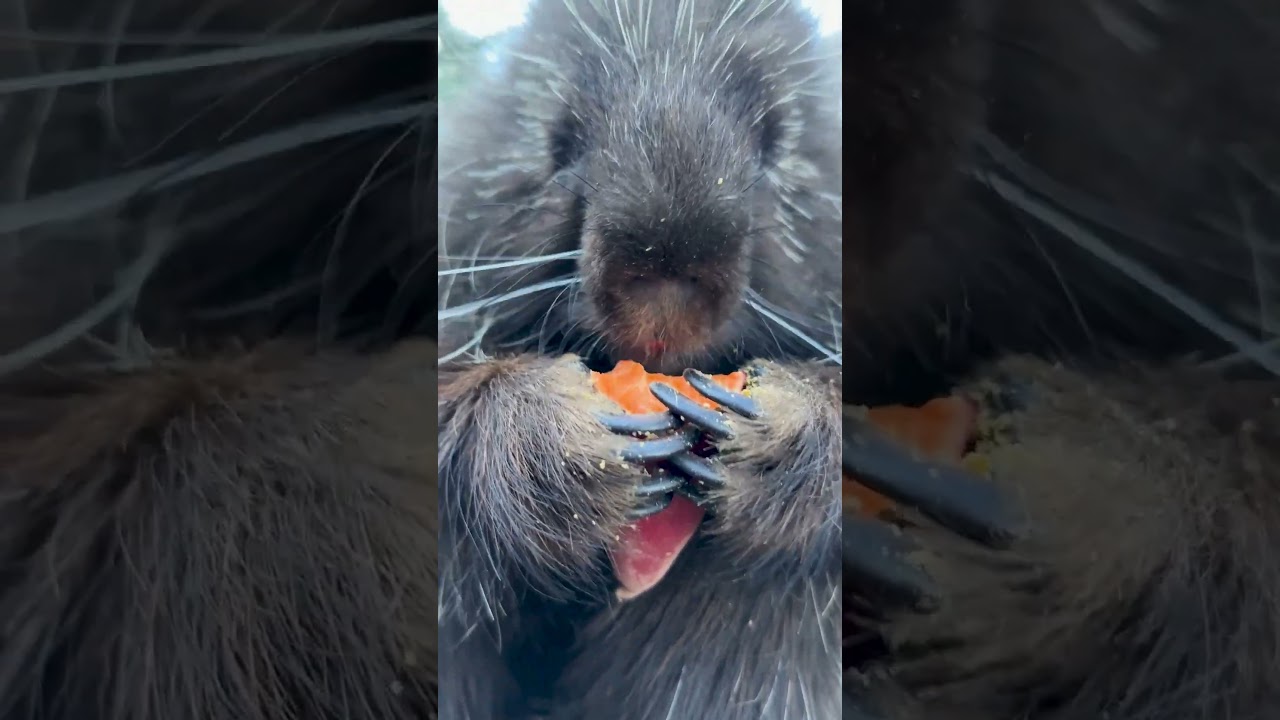– The Whimsical World of Porcupine Feeding Habits
– Understanding Our Quilled Friends: What Porcupines Eat
– Captivating Porcupine Facts That Will Enthral You
– How Zoos Enhance Our Understanding of Porcupine Diets
– Ways to Incorporate Porcupine Awareness in Daily Life
The realm of the animal kingdom is rife with enchantment and wonder, with each creature showcasing its own set of unique characteristics and habits that never cease to fascinate. Today, let’s delve into a topic that may raise quills in intrigue – the gastronomic inclinations of one of nature’s prickliest denizens: the porcupine. Armed with an insatiable curiosity about these spiny animals, we’ll explore what they snack on, why their munching matters and how people can foster a deeper appreciation for these creatures.
As you continue reading, imagine yourself embarking on an exploratory trek into the lush greenery of the forest, where the rustle of leaves could reveal the shy but captivating presence of a porcupine in its natural habitat. You might wonder, “What’s on the menu for these creatures?” A simple glimpse into their diet unveils a window into their complex ecosystem, further highlighting the interconnectedness of all living beings.
**The Whimsical World of Porcupine Feeding Habits**
Contrary to the thorny exterior they present to would-be predators, porcupines are primarily herbivorous, delighting in a varied menu provided by Mother Nature’s pantry. Their tastes include an assortment of leaves, twigs, and bark, with a particular penchant for the cambium layer between the tough bark and the tree wood – a layer rich in nutrients and easy to digest. During the warmer months, these creatures are known to diversify their diet with fruits, berries, and even farm crops if available.
Porcupines possess an intriguing, almost paradoxical combination of being difficult to approach yet nonchalantly gregarious when scavenging for their meals. On a delightful autumn evening, you might observe a porcupine leisurely feasting on a cornucopia of fallen fruit beneath a tree, embodying the very essence of the season’s bountiful harvest.
**Understanding Our Quilled Friends: What Porcupines Eat**
What exactly is a delicious meal for our spined companions? North American porcupines, for example, have a fondness for the wood of conifers, showcasing a preference that could almost be likened to the connoisseurship that a human food critic might hold for fine dining. Yet, never is their choice random; porcupines often return to the same trees, forming an intimate dining ritual that marks the passage of seasons and the regrowth of their favorite woodland treats.
In exploring the dining culture of porcupines, we stumble upon the core of their existence, much like unearthing a secret recipe from a time-worn cookbook. There remains a little-known fact about these animals – they lack the lavish palate of their forest neighbors. Instead, their fare is simple, but consuming their food is both necessary and a spectacle of the ecosystem’s grandeur in its own right.
**Captivating Porcupine Facts That Will Enthral You**
Porcupines are not just dining patrons of the forest; they are living, breathing storybooks wrapped in quills. Each quill is a tale of survival, adaptation, and the evolutionary arms race. Did you know that a single porcupine can boast up to 30,000 quills? Each one, a natural engineering marvel, serves as a formidable defense mechanism and a striking visual wonder.
The act of porcupine munching becomes even more intriguing when considering their role in the forest’s health. As they nibble away at the bark and branches, they inadvertently prune the trees, which can encourage the growth of new plants and sometimes even increase the overall plant diversity in the woods.
**How Zoos Enhance Our Understanding of Porcupine Diets**
Zoos and wildlife reserves offer humans a unique peephole into these creatures’ natural behaviors and diets. By observing porcupines within the managed care of these institutions, we can learn not only their eating patterns but also the intricacies of their digestive systems, how they forage, and how their dietary needs shift with the changing seasons. Through the work of diligent zookeepers who meticulously plan varied and nutritionally balanced diets, we are privy to the complexities of porcupine dietary requirements outside their native woodlands.
One might ponder whether the culinary needs of captive porcupines can adequately reflect those of their wild relatives. Rest assured, the nutritional science employed by zoological parks is as intricate as the dietary patterns of the animals themselves, ensuring that even in captivity, a porcupine’s mealtime remains a true-to-nature, gourmet experience.
**Ways to Incorporate Porcupine Awareness in Daily Life**
Foster a deeper appreciation for these quilled marvels with simple yet meaningful gestures. Plant native trees and shrubs that offer natural foraging opportunities for wild porcupines in your area. Participate in citizen science projects that track and report the presence and behavior of local porcupine populations, contributing to a broader understanding of their ecological roles.
Furthermore, support your local zoos and wildlife sanctuaries that provide essential insights into porcupine care and preservation. Advocate for better wildlife management policies that protect porcupine habitats from unwarranted human intrusion, ensuring these creatures continue to thrive for generations to come.
In a world increasingly disconnected from nature’s rhythms, promoting porcupine awareness could bring about a renaissance of ecological empathy, sparking an unwavering commitment to preserving the rich tapestry of life on our planet.
As we conclude this foray into the feastings of porcupines, I hope that you find yourself not just informed but thoroughly charmed by these creatures, who remind us of the simple beauty intrinsic to the web of life with every morsel they consume. Perhaps on your next stroll through the woods, you’ll pause, smile, and consider the unseen banquet happening just out of sight, wherein lies the essence of our world’s mysterious, wild, and undeniably quilled wonders.
*****
Source Description

